
How to Use TPA3110: Examples, Pinouts, and Specs
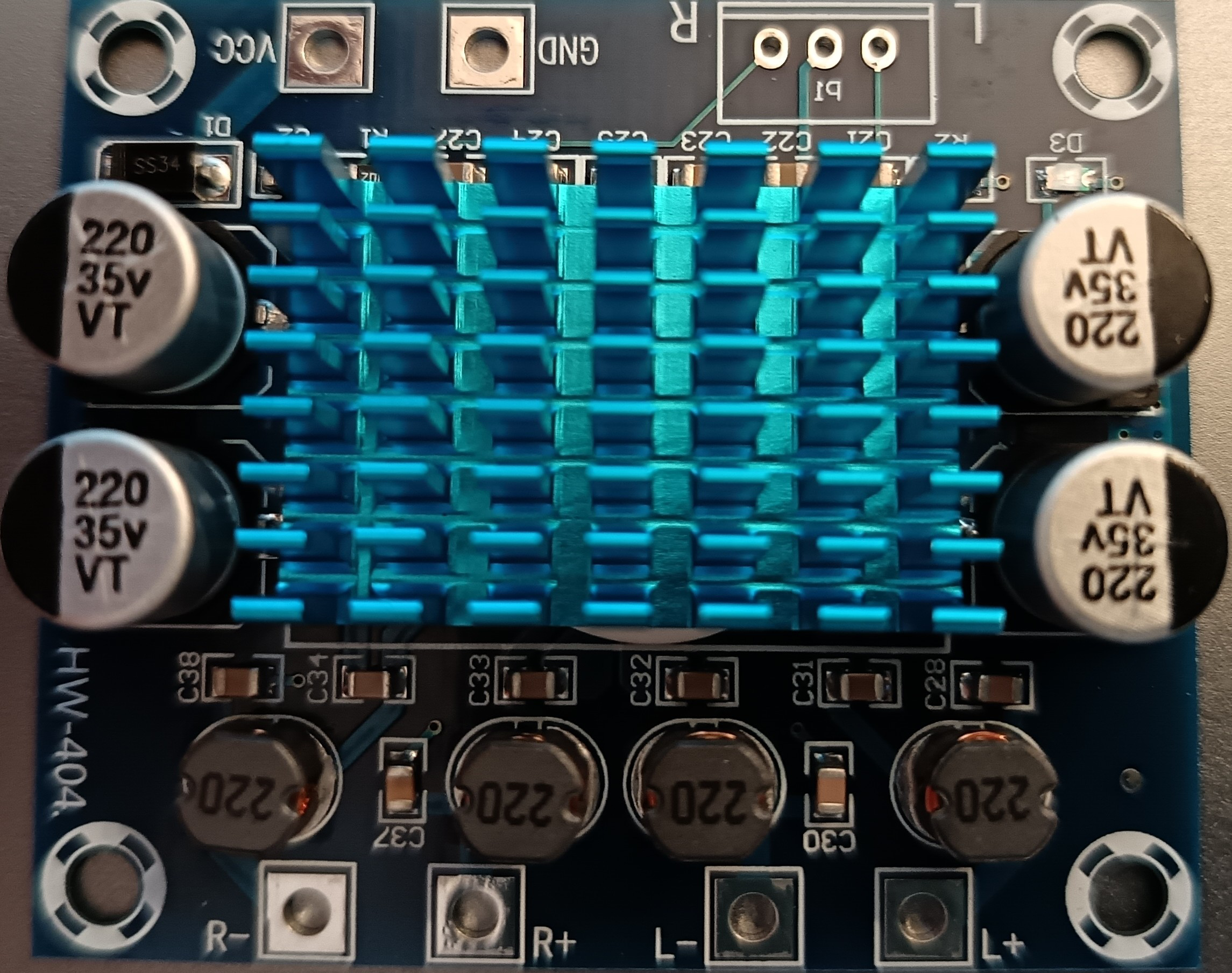
 Design with TPA3110 in Cirkit Designer
Design with TPA3110 in Cirkit DesignerIntroduction
The TPA3110 is a Class-D audio amplifier IC designed by Esida, known for its high efficiency and low heat generation. This component is ideal for driving speakers in various audio applications, including portable speakers, sound systems, and other audio amplification needs. The TPA3110 can operate with a wide range of supply voltages, making it versatile for different power sources.
Explore Projects Built with TPA3110
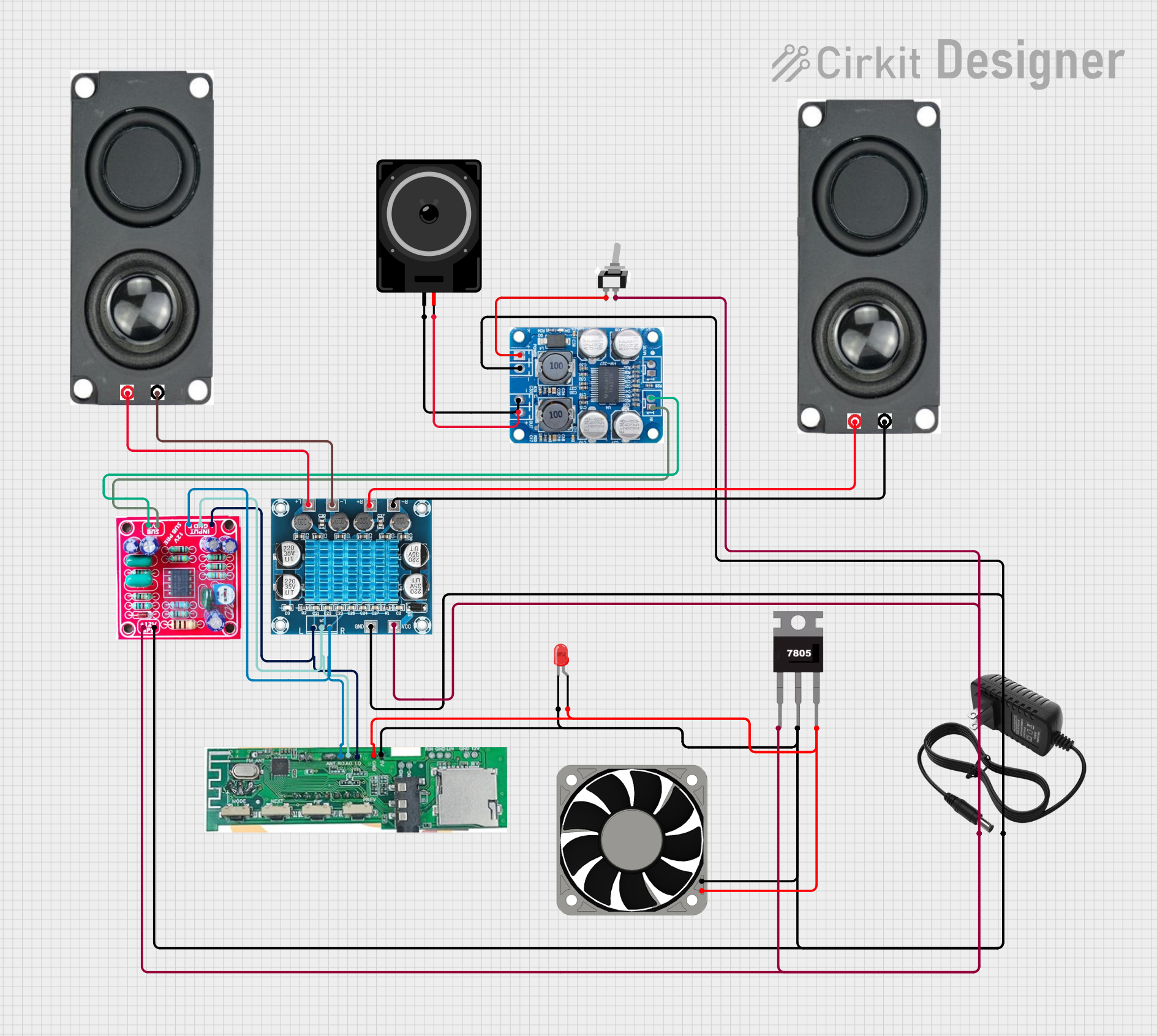
 Open Project in Cirkit Designer
Open Project in Cirkit Designer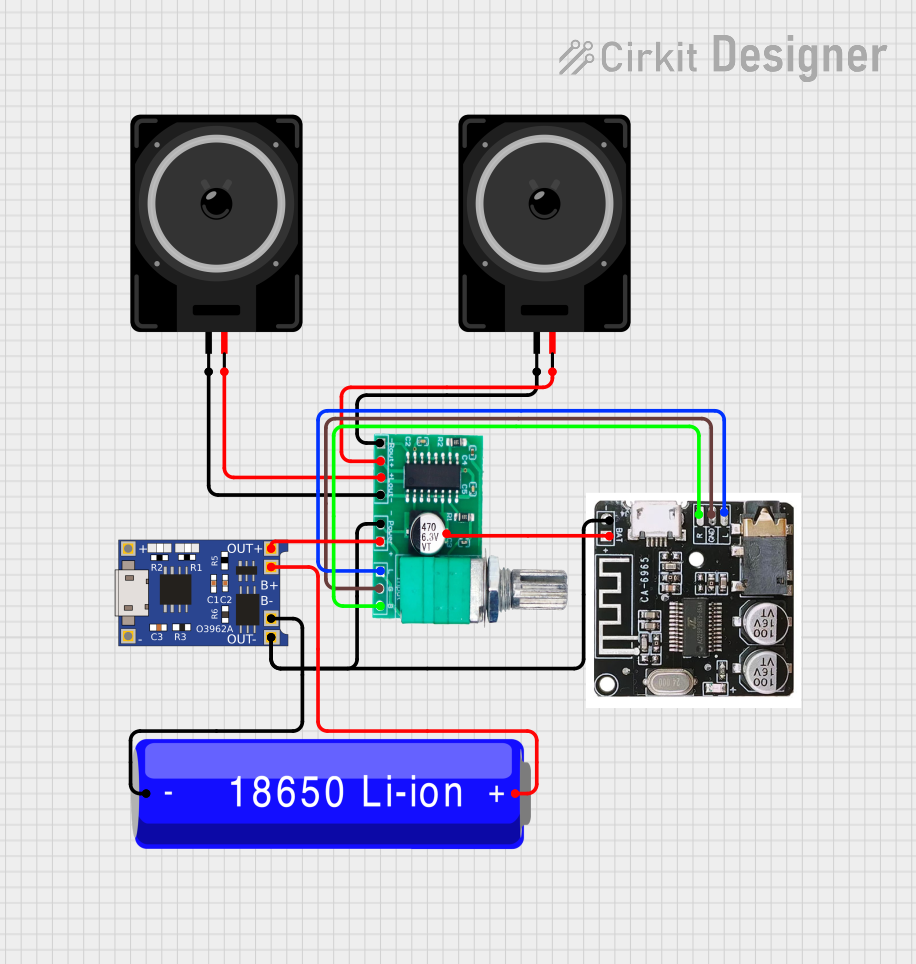
 Open Project in Cirkit Designer
Open Project in Cirkit Designer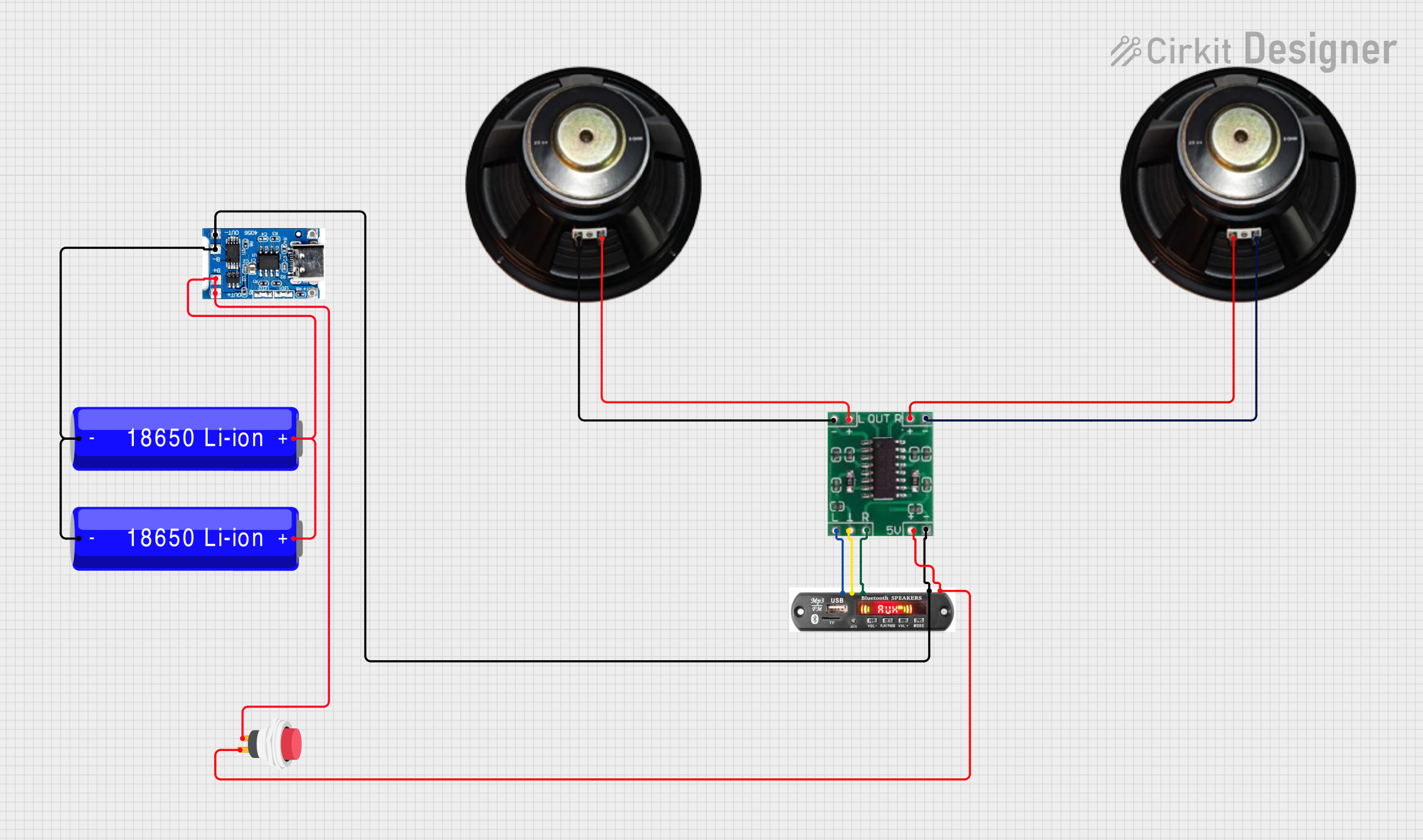
 Open Project in Cirkit Designer
Open Project in Cirkit Designer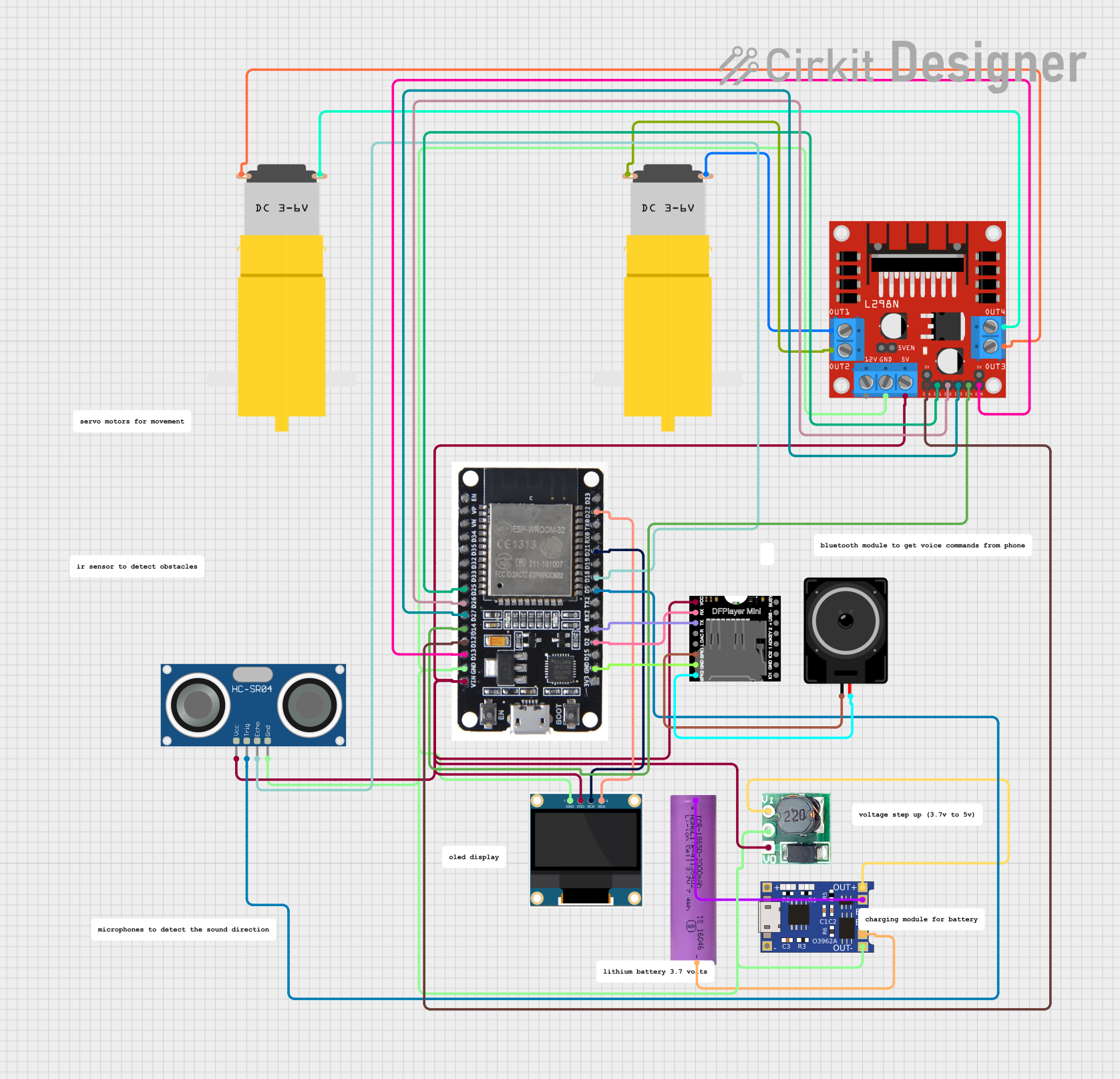
 Open Project in Cirkit Designer
Open Project in Cirkit DesignerExplore Projects Built with TPA3110

 Open Project in Cirkit Designer
Open Project in Cirkit Designer
 Open Project in Cirkit Designer
Open Project in Cirkit Designer
 Open Project in Cirkit Designer
Open Project in Cirkit Designer
 Open Project in Cirkit Designer
Open Project in Cirkit DesignerTechnical Specifications
Key Technical Details
| Parameter | Value |
|---|---|
| Manufacturer | Esida |
| Part ID | Stereo audio amplifier board DC 8-24V 3A |
| Supply Voltage | 8V to 24V DC |
| Output Power | 2 x 15W (at 8Ω, 24V) |
| Efficiency | Up to 90% |
| THD+N | 0.1% (at 1W, 1kHz) |
| Signal-to-Noise Ratio | 95 dB |
| Operating Temperature | -40°C to 85°C |
Pin Configuration and Descriptions
| Pin Number | Pin Name | Description |
|---|---|---|
| 1 | INL | Left channel audio input |
| 2 | INR | Right channel audio input |
| 3 | GND | Ground |
| 4 | VCC | Power supply (8V to 24V DC) |
| 5 | OUTL+ | Positive output for left channel |
| 6 | OUTL- | Negative output for left channel |
| 7 | OUTR+ | Positive output for right channel |
| 8 | OUTR- | Negative output for right channel |
Usage Instructions
How to Use the Component in a Circuit
- Power Supply: Connect the VCC pin to a DC power supply ranging from 8V to 24V. Ensure the power supply can provide sufficient current (up to 3A) for optimal performance.
- Ground Connection: Connect the GND pin to the ground of the power supply.
- Audio Input: Connect the audio source to the INL and INR pins for left and right channels, respectively.
- Speaker Connection: Connect the speakers to the OUTL+/- and OUTR+/- pins. Ensure the speakers' impedance matches the amplifier's specifications (typically 8Ω).
Important Considerations and Best Practices
- Heat Dissipation: Although the TPA3110 is highly efficient, it is recommended to use a heat sink or ensure proper ventilation to avoid overheating.
- Power Supply: Use a stable and clean power supply to avoid noise and distortion in the audio output.
- Speaker Impedance: Ensure the connected speakers have an impedance of 8Ω to match the amplifier's output specifications.
- PCB Layout: When designing a PCB, keep the power and ground traces thick and short to minimize resistance and inductance.
Example Circuit with Arduino UNO
/*
* Example code to control the TPA3110 amplifier with an Arduino UNO.
* This example demonstrates how to use the amplifier to play audio
* from an analog input.
*/
const int audioInputPin = A0; // Analog input pin for audio signal
void setup() {
// Initialize serial communication for debugging
Serial.begin(9600);
}
void loop() {
// Read the analog input value
int audioSignal = analogRead(audioInputPin);
// Map the analog input value to a range suitable for the amplifier
int mappedSignal = map(audioSignal, 0, 1023, 0, 255);
// Output the mapped signal to the amplifier
analogWrite(9, mappedSignal); // Assuming pin 9 is connected to the amplifier
// Print the signal value for debugging
Serial.println(mappedSignal);
// Small delay to stabilize the output
delay(10);
}
Troubleshooting and FAQs
Common Issues Users Might Face
No Sound Output:
- Solution: Check the power supply connections and ensure the voltage is within the specified range. Verify the audio input connections and ensure the audio source is functioning correctly.
Distorted Sound:
- Solution: Ensure the power supply is stable and free from noise. Check the speaker connections and ensure they match the amplifier's impedance specifications. Reduce the input signal level if it is too high.
Overheating:
- Solution: Ensure proper ventilation and consider using a heat sink. Check the power supply voltage and current to ensure they are within the specified limits.
FAQs
Q: Can I use a 4Ω speaker with the TPA3110?
- A: It is recommended to use 8Ω speakers for optimal performance. Using 4Ω speakers may cause overheating and reduce the amplifier's efficiency.
Q: What is the maximum input voltage for the TPA3110?
- A: The maximum input voltage for the TPA3110 is 24V DC.
Q: How can I reduce noise in the audio output?
- A: Use a clean and stable power supply, keep audio input cables short, and ensure proper grounding in your circuit design.
This documentation provides a comprehensive guide to using the TPA3110 Stereo Audio Amplifier Board. By following the instructions and best practices, users can achieve optimal performance and reliability in their audio applications.